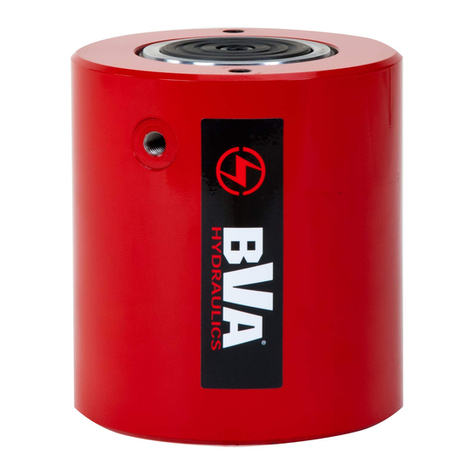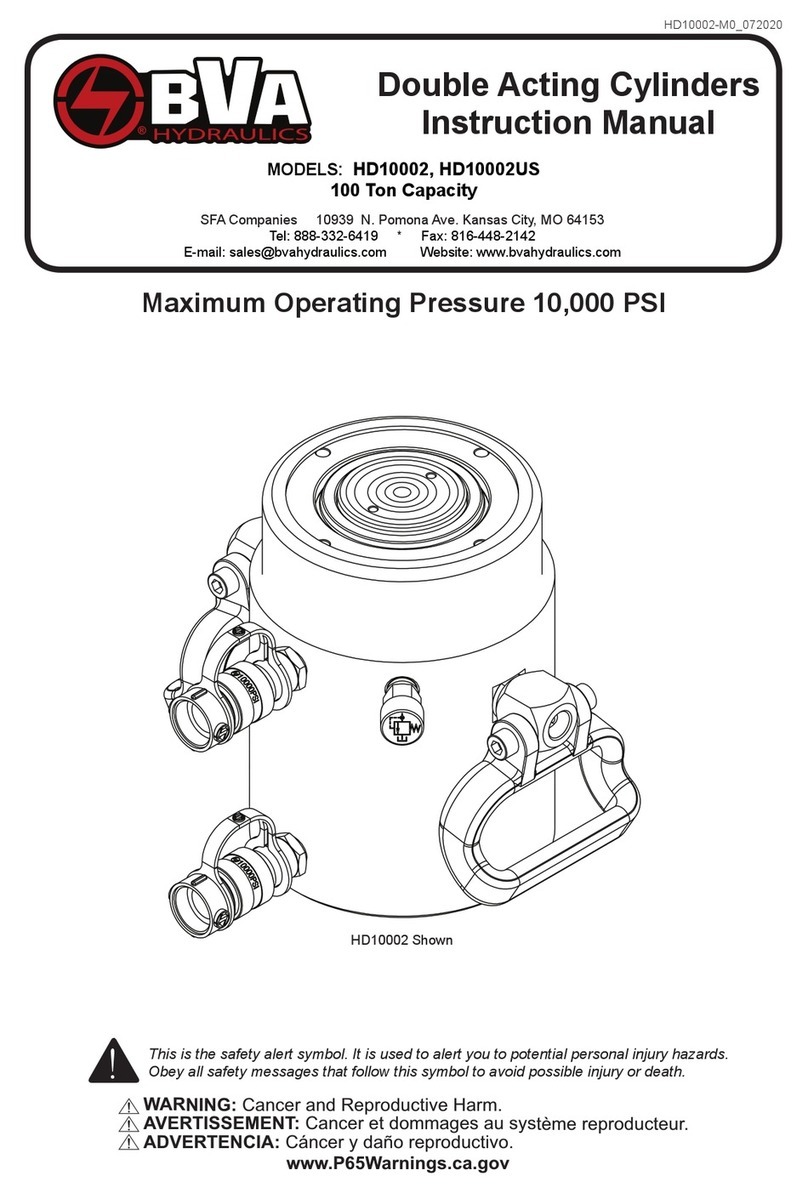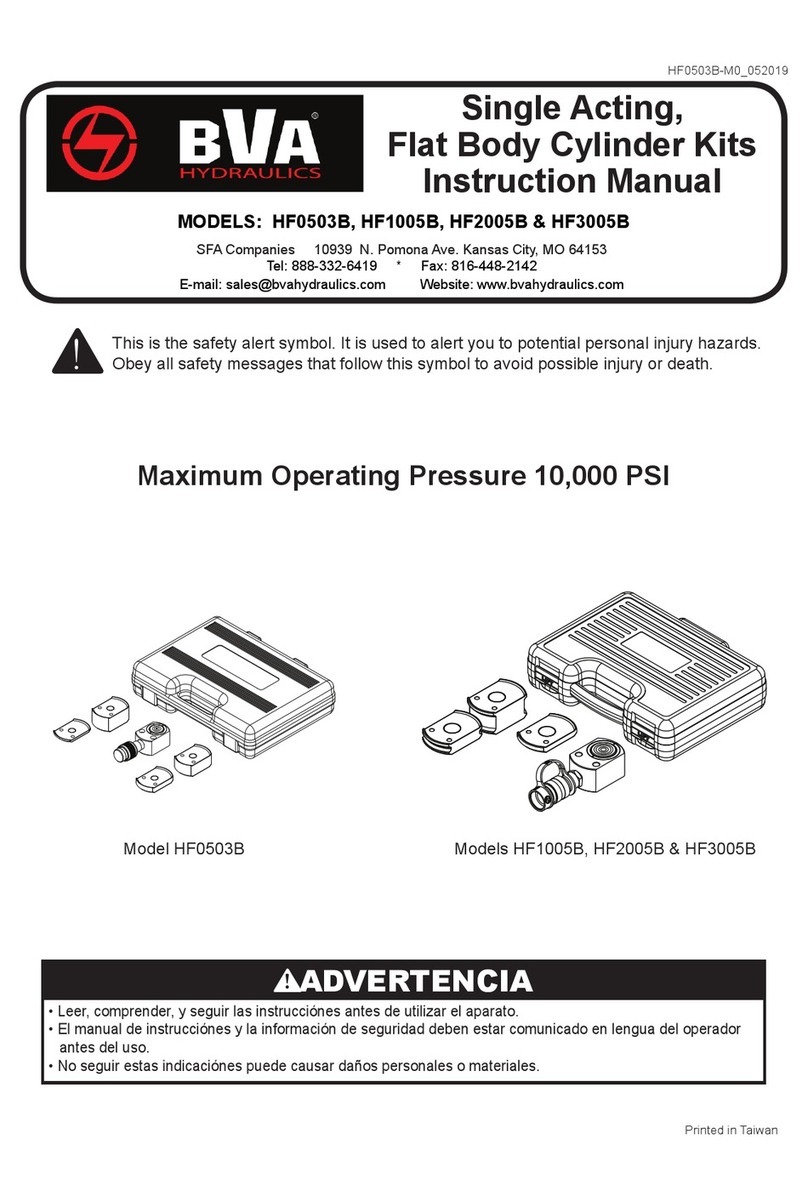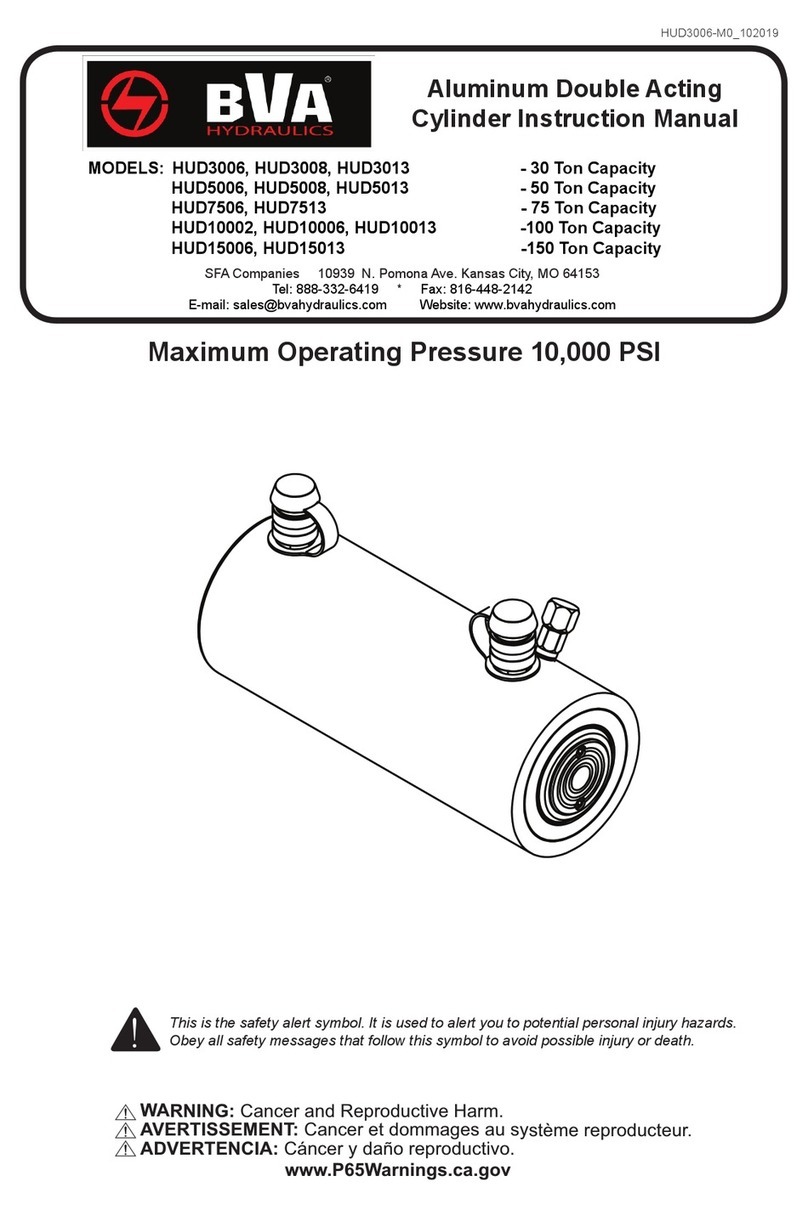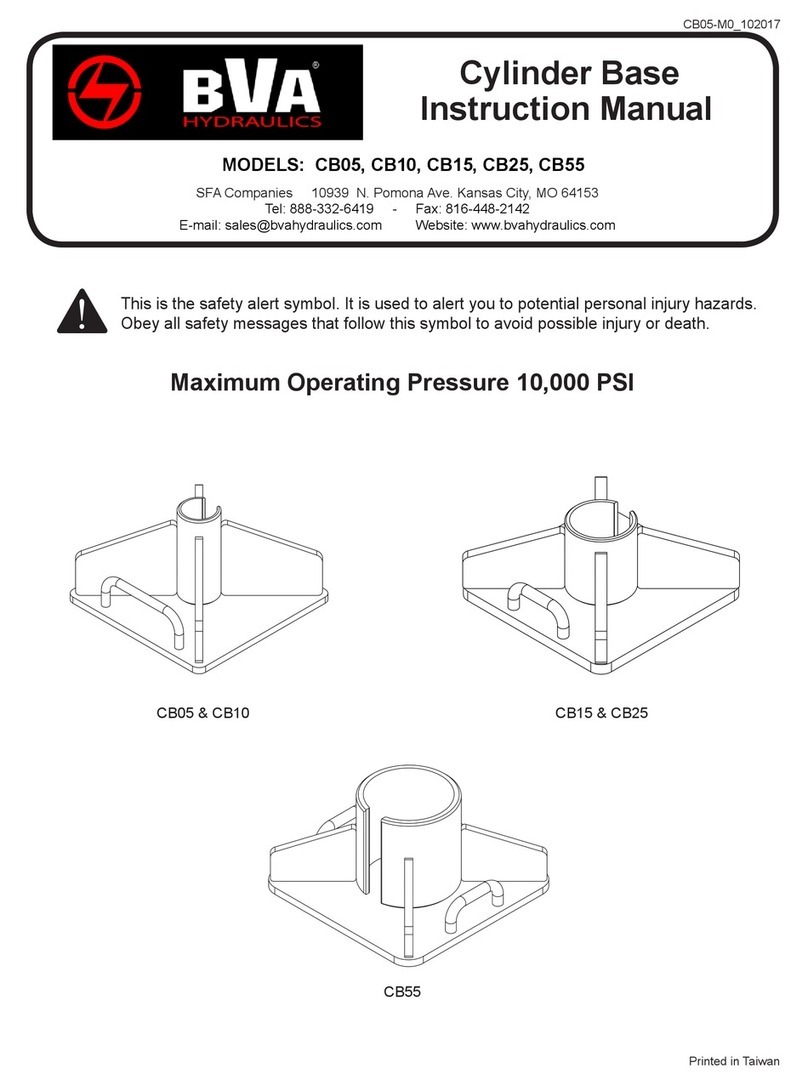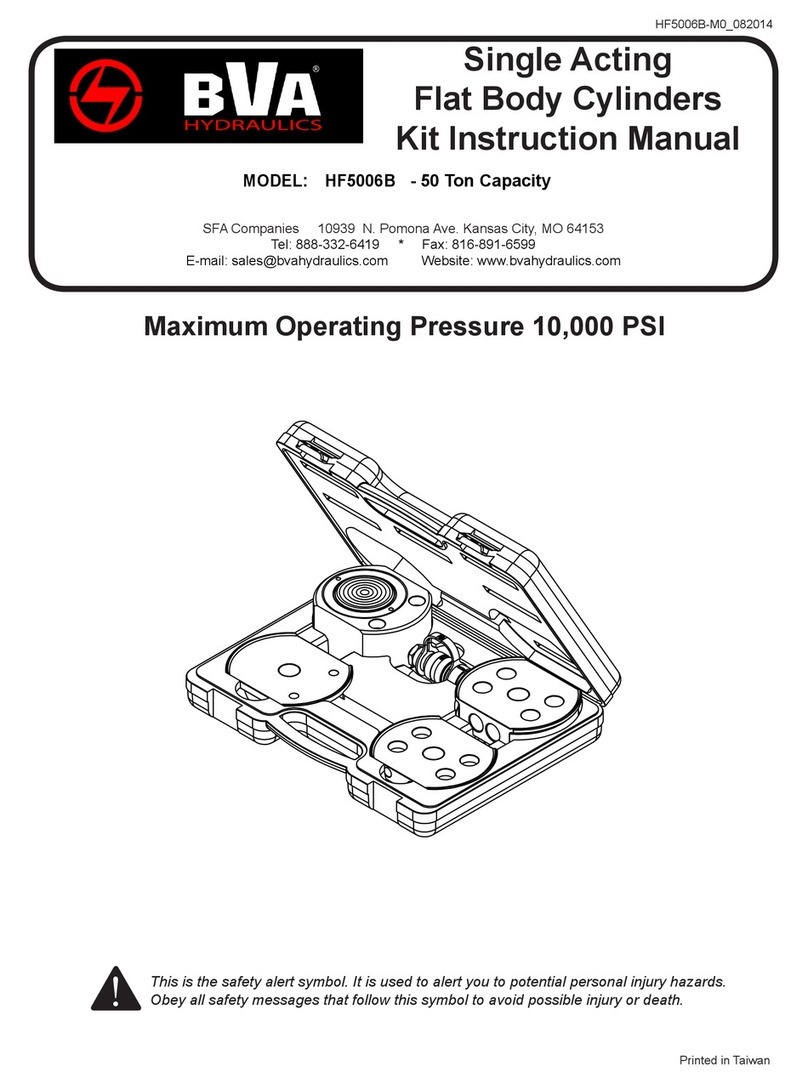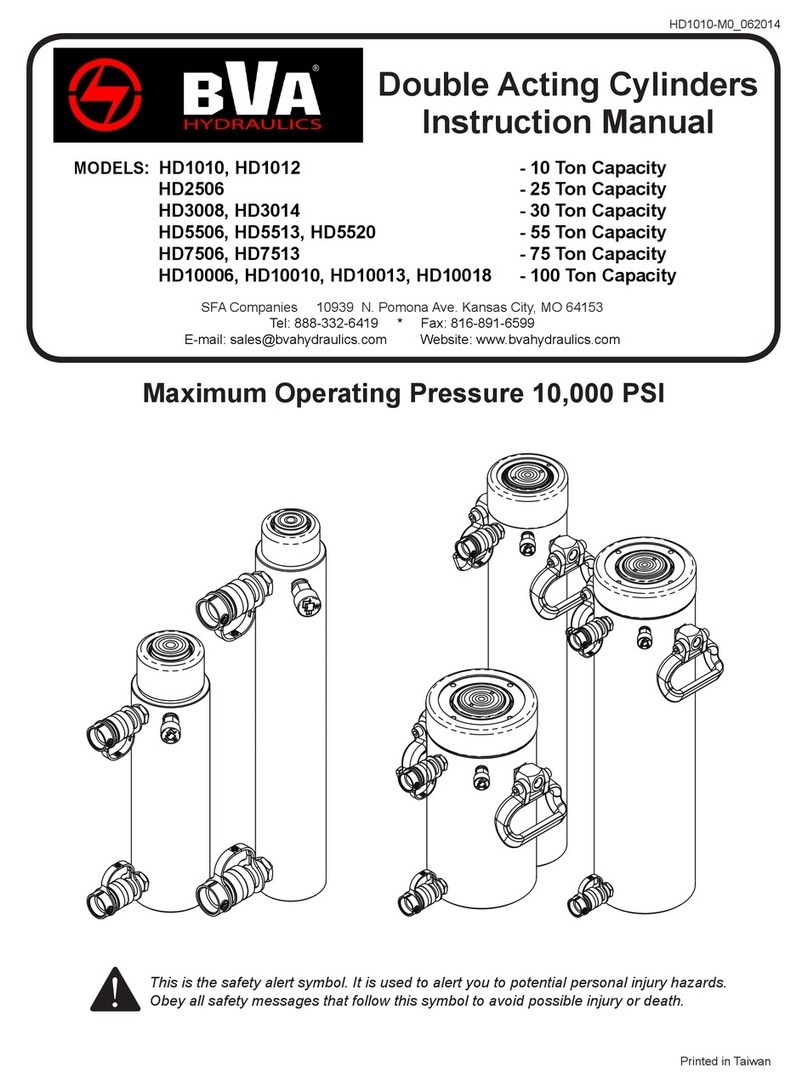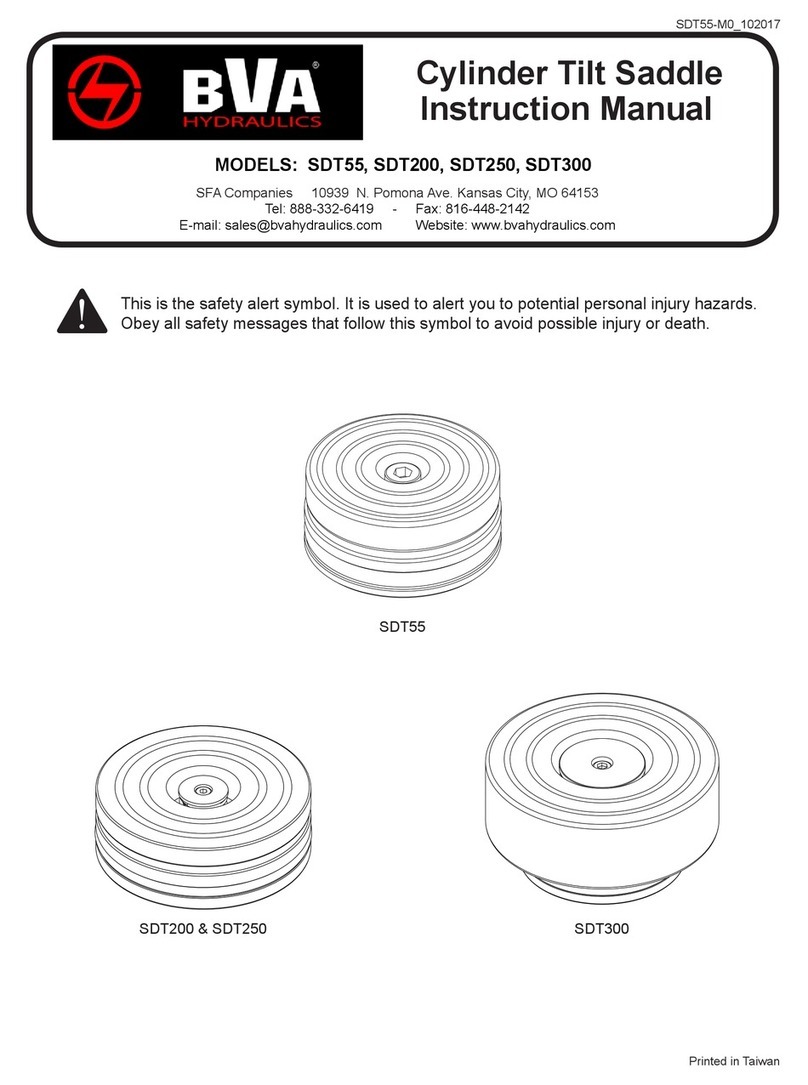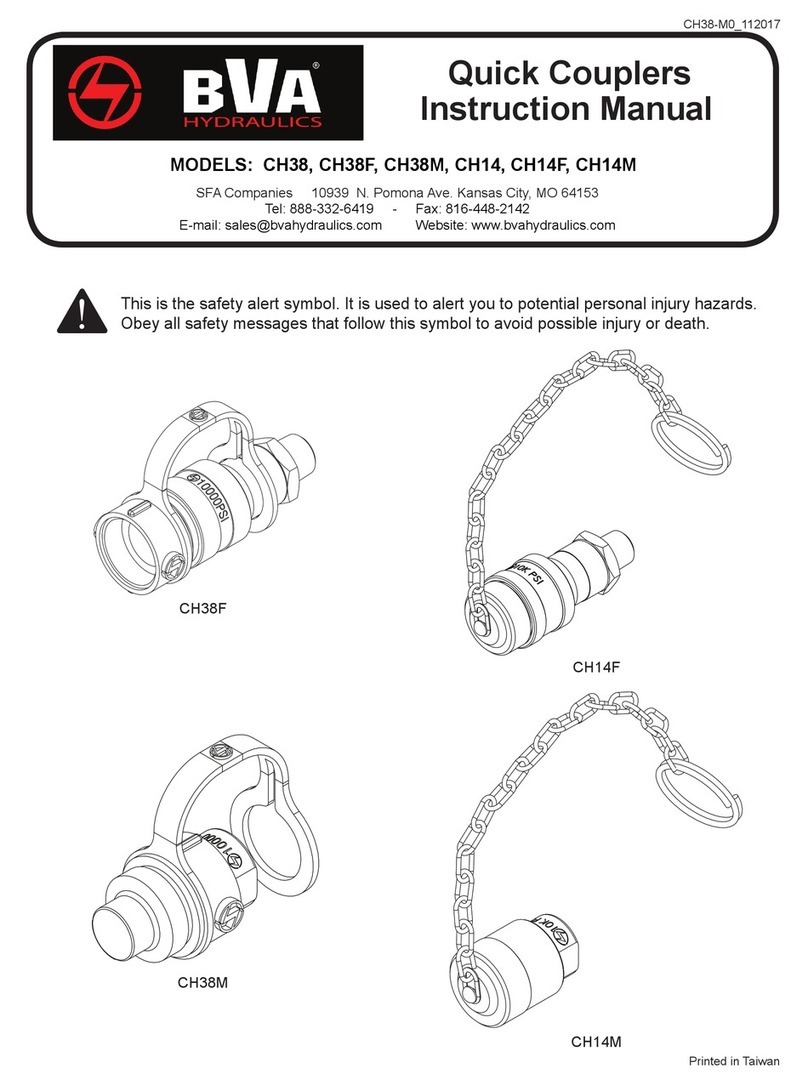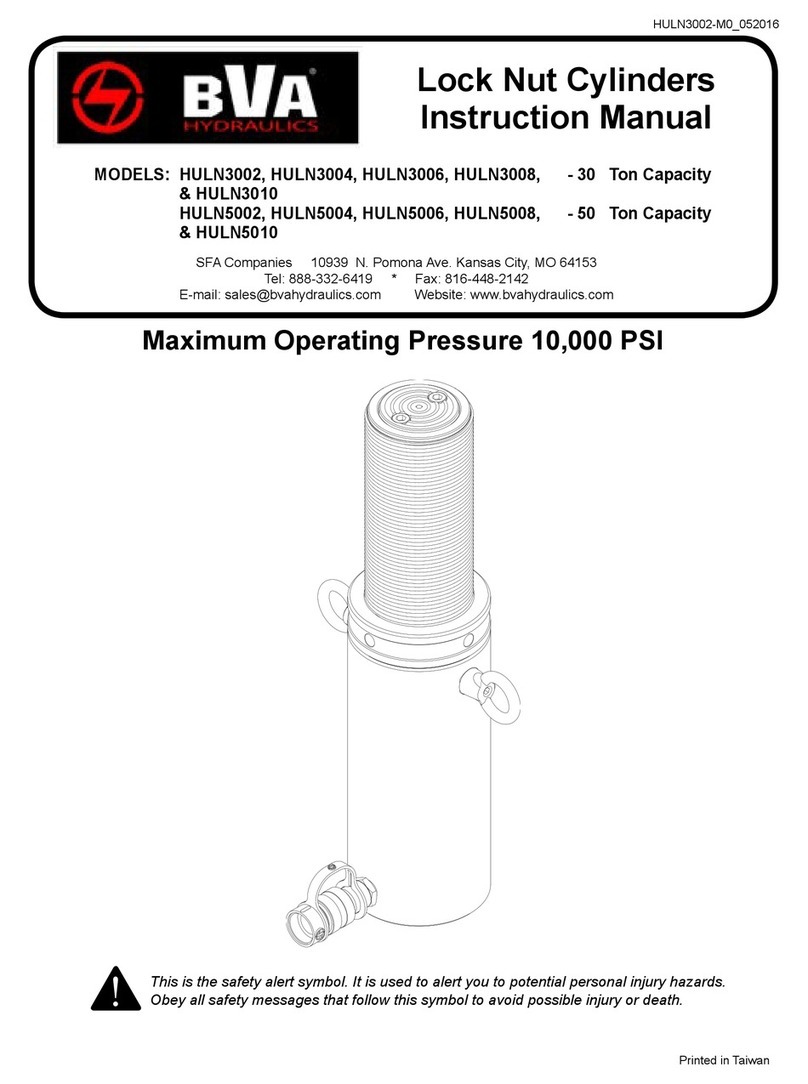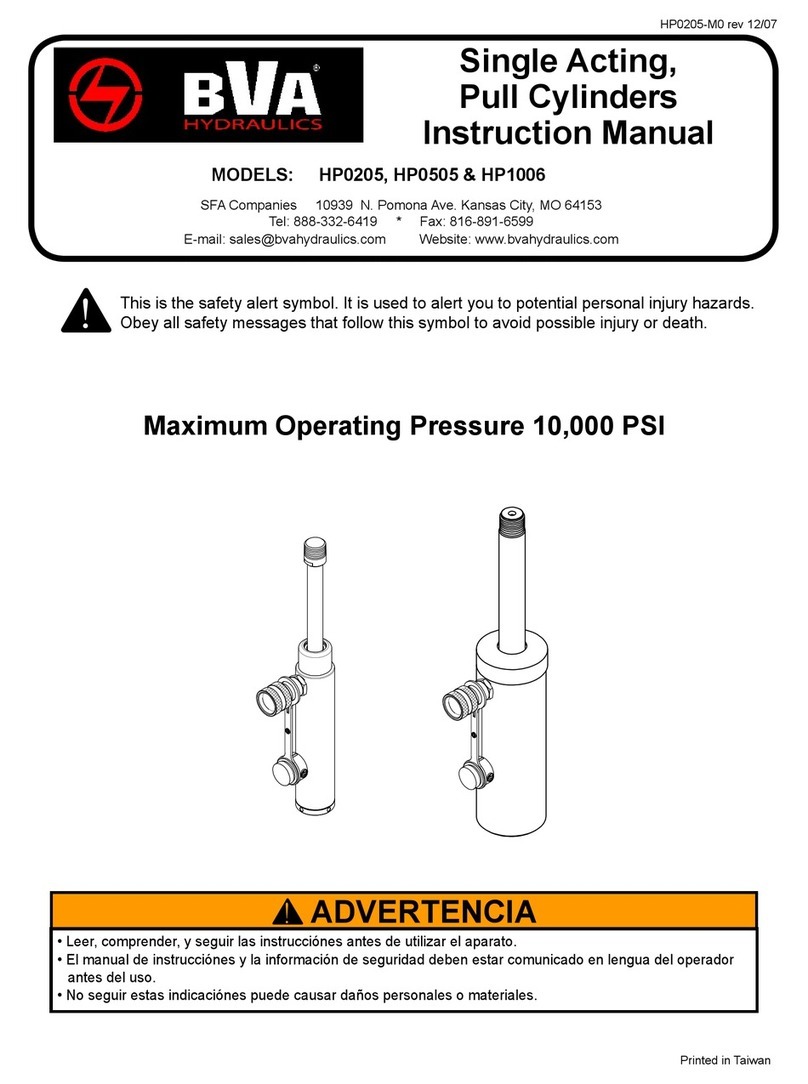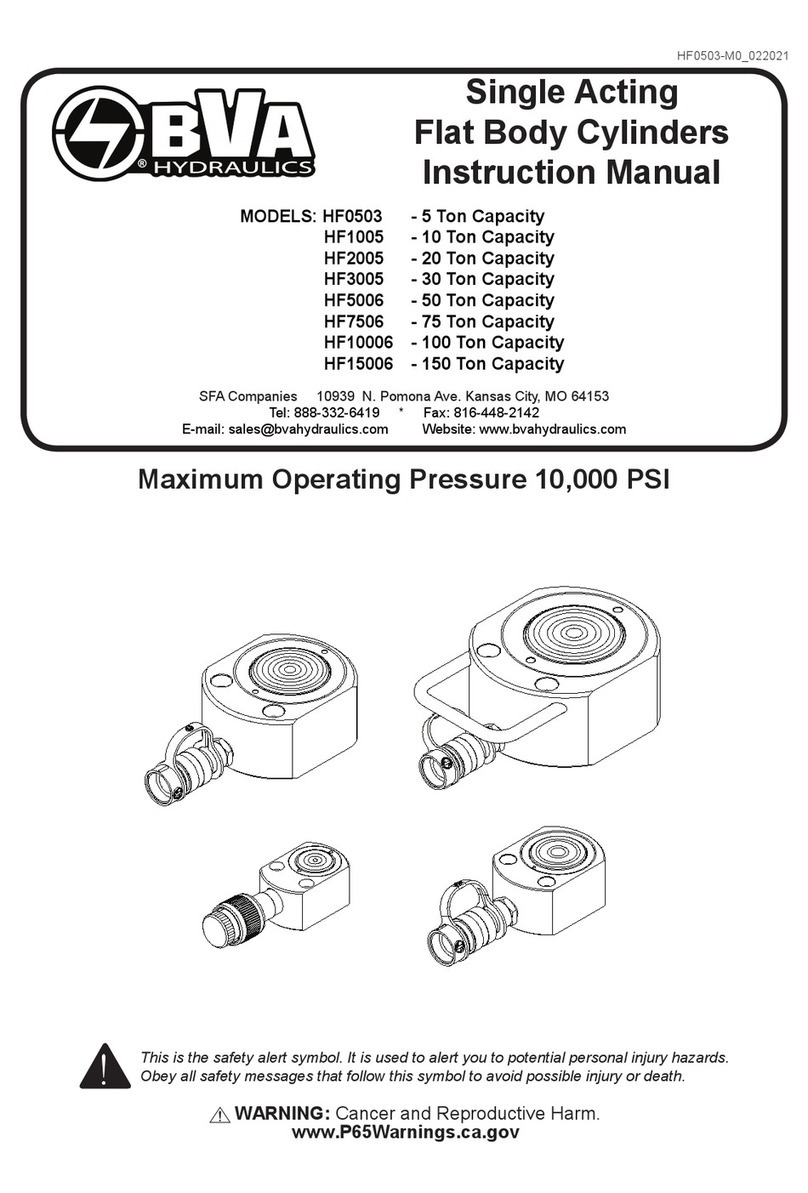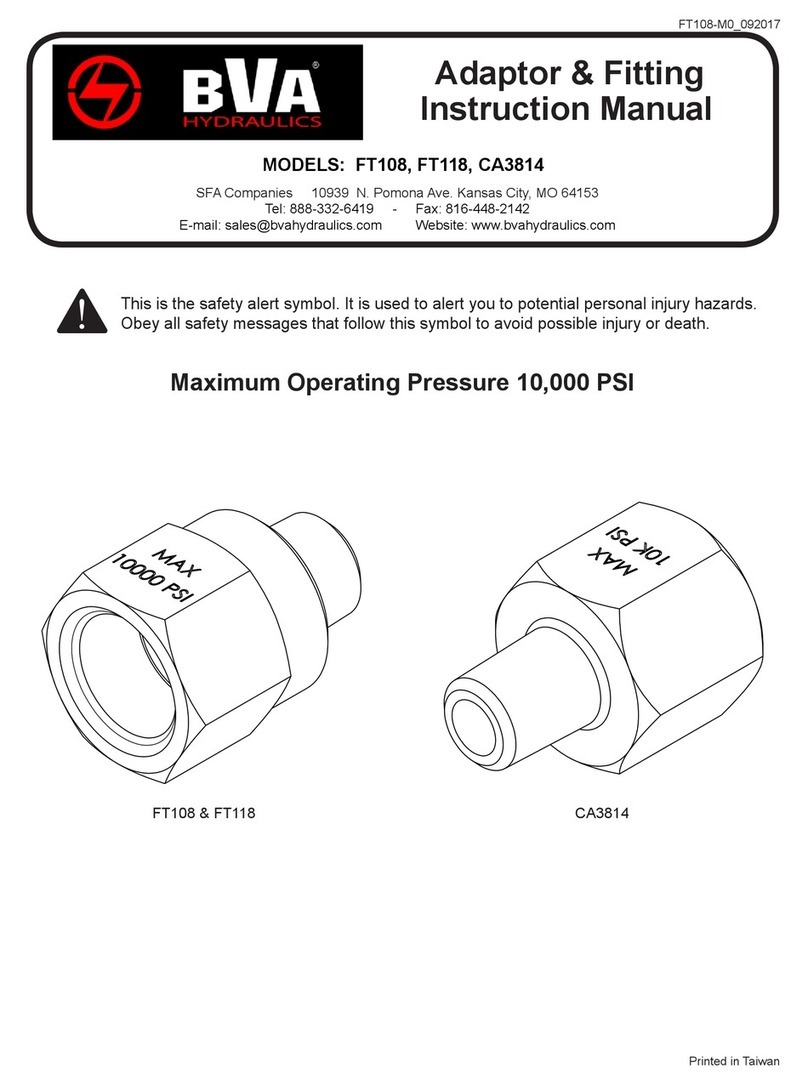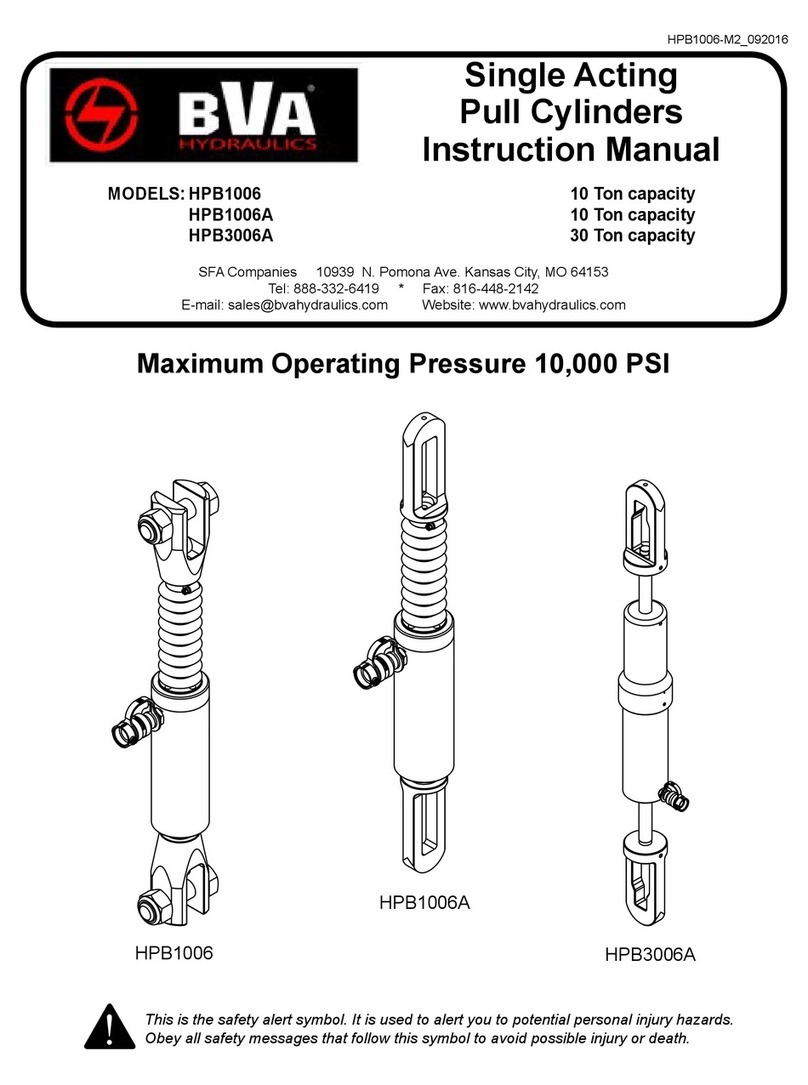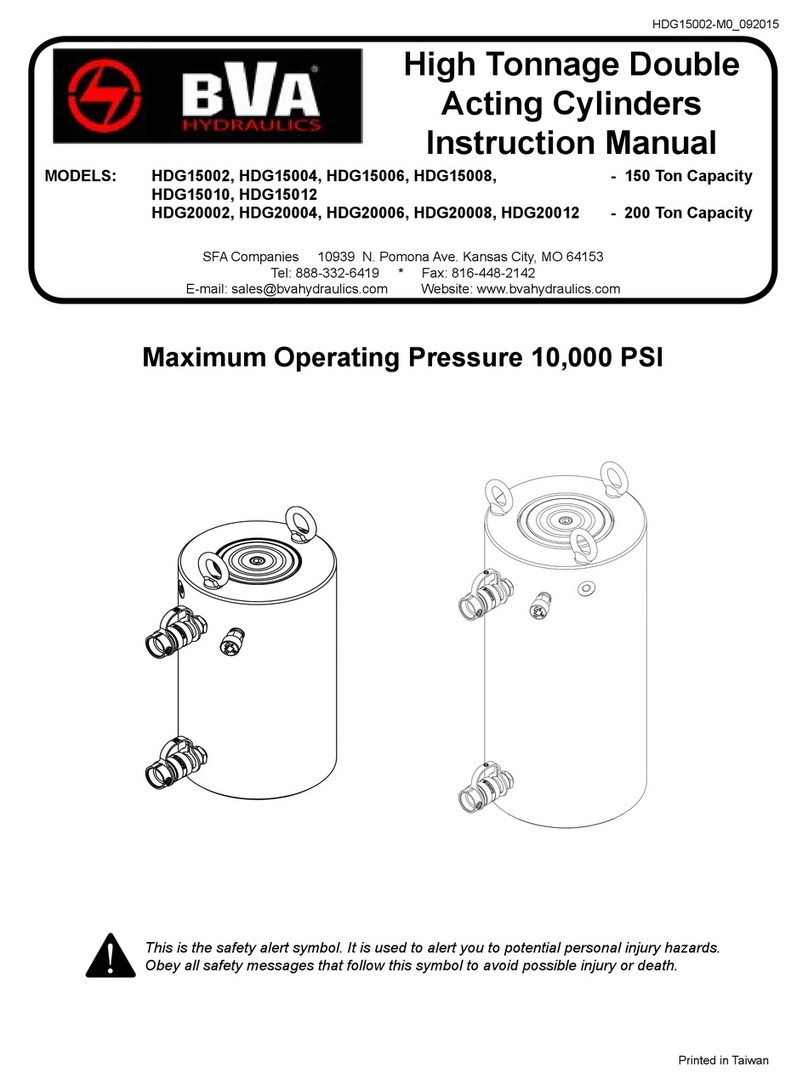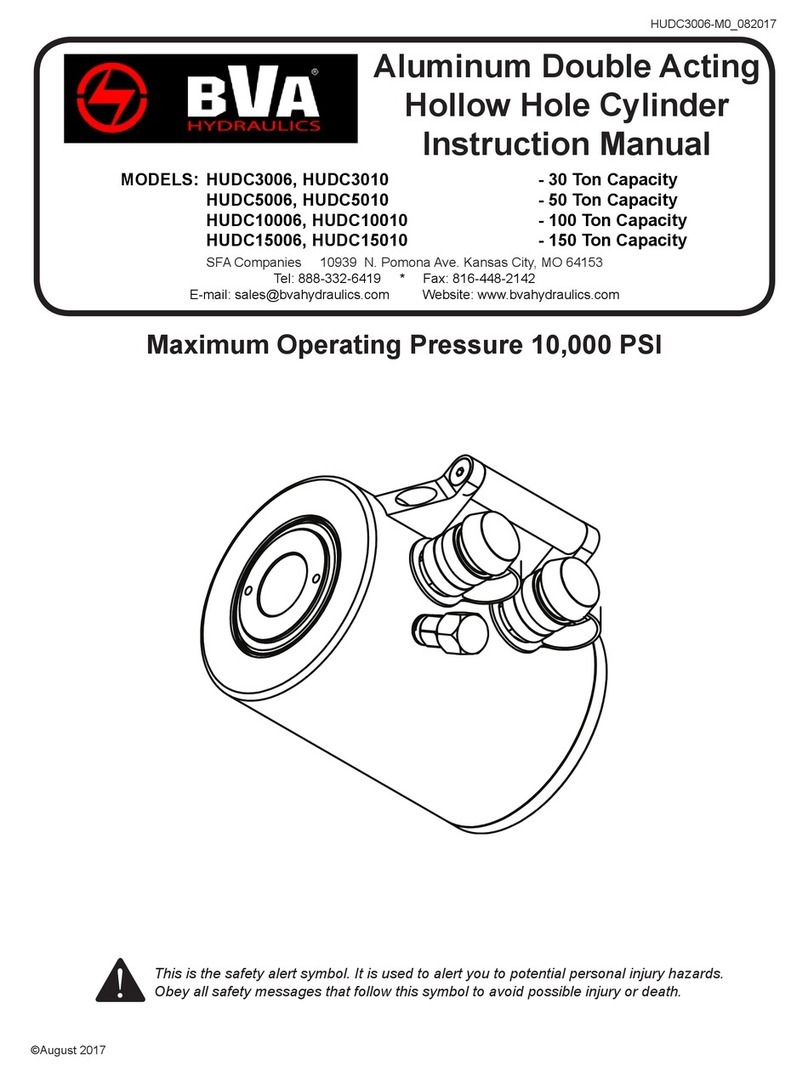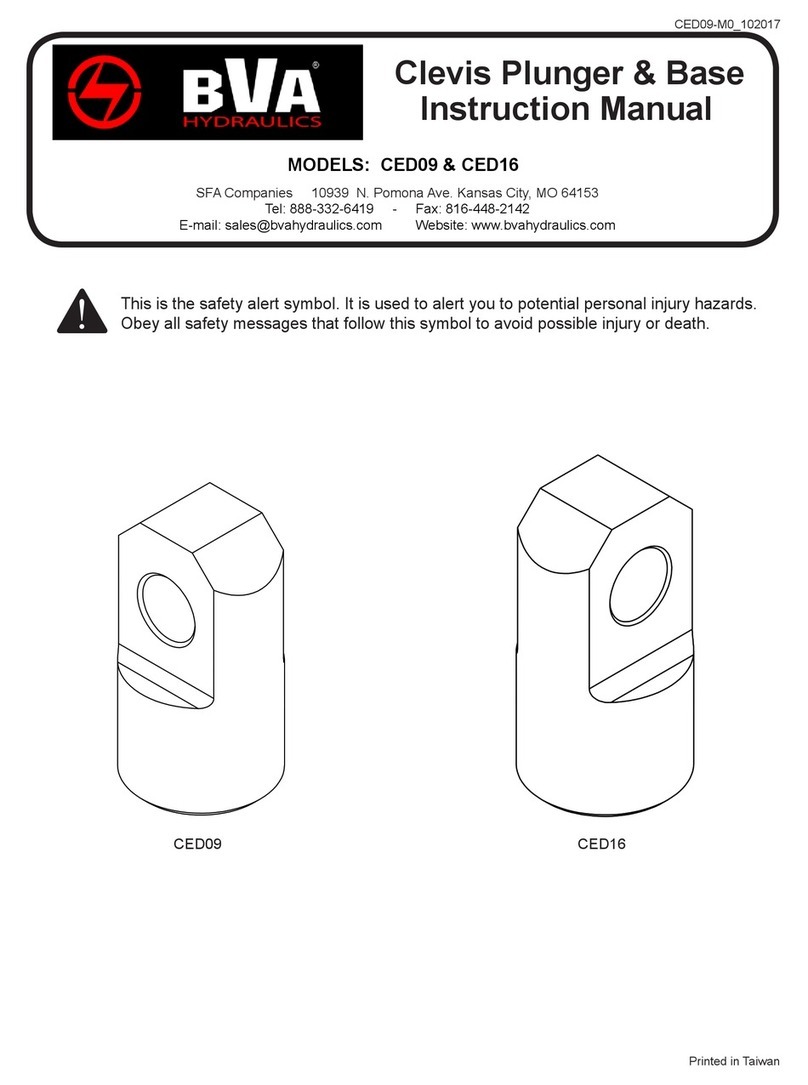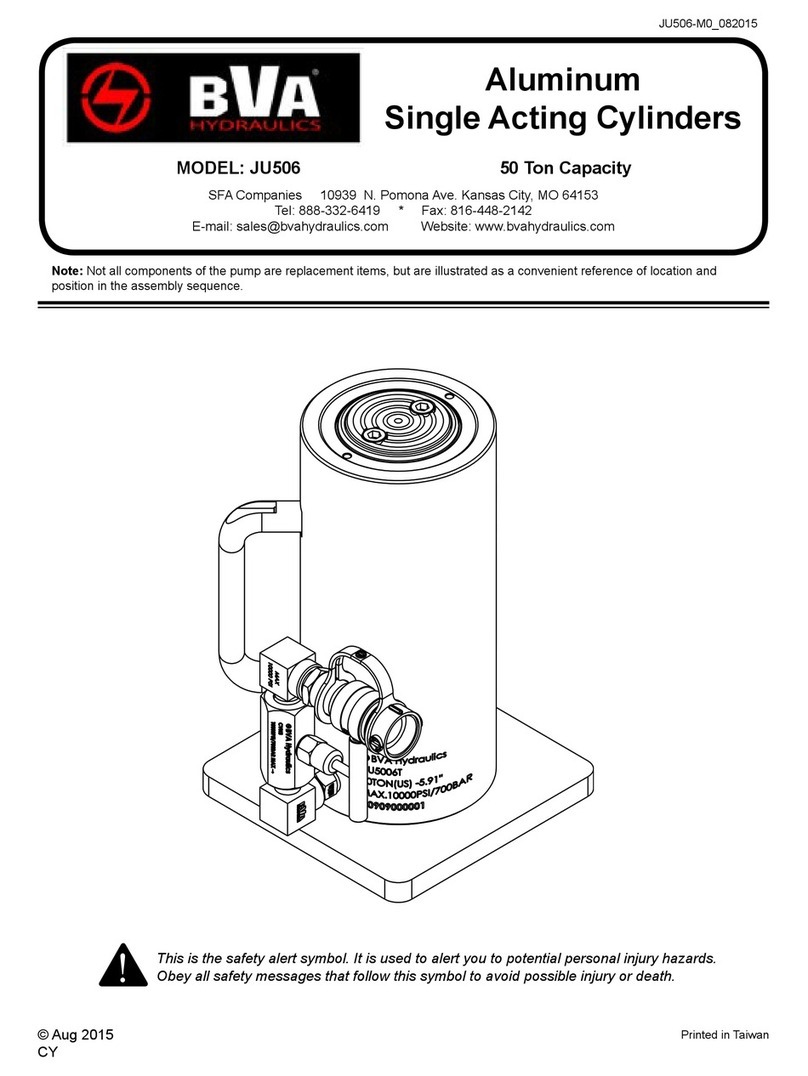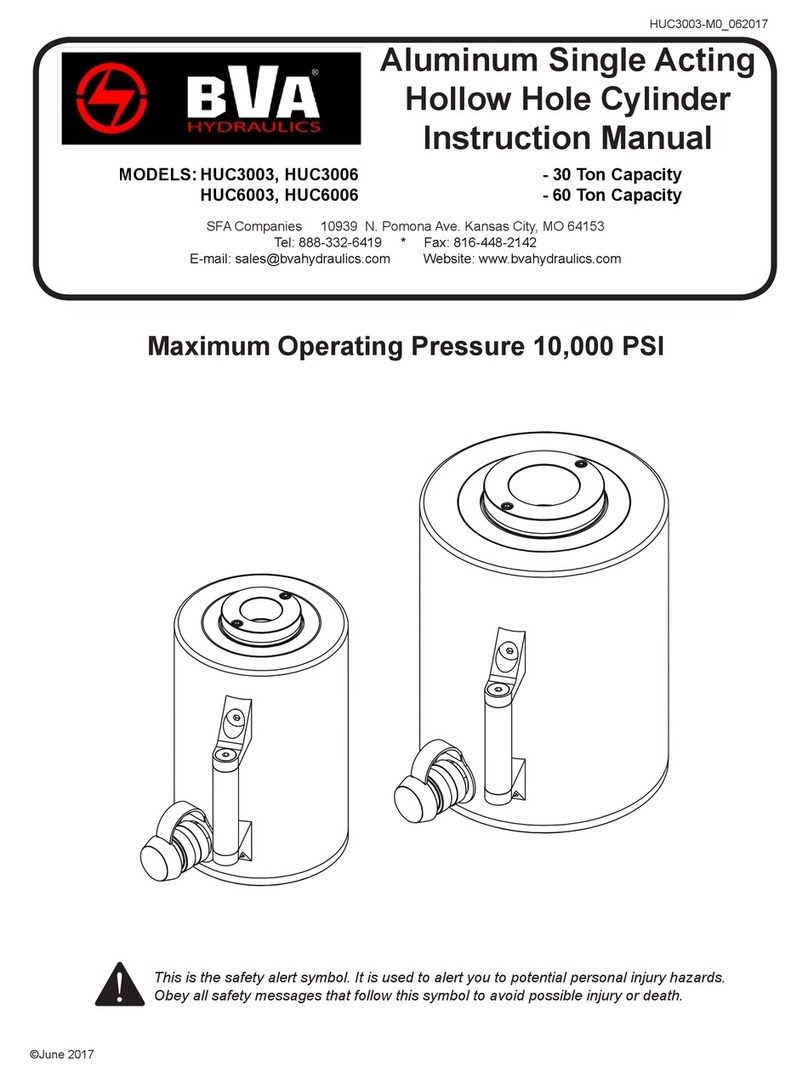
3
INSTALLATION
NOTICE: Use an approved, high-grade pipe sealant to seal all
hydraulic connections.
1.
Remove the dust cap and rubber plug from coupler
.
2. Inspectallthreadsandttingsforsignsofwearordamage,and
replaceasneeded.Cleanallthreadsandttings.
3. Connect hydraulic hose from hydraulic pump to the cylinder
coupler.Ensurethattherearenouidleaks.
4. Installin-linepressuregauge.
5. Check for leaks in system and have repaired by qualified
personnel.
NOTICE: The use of cylinder attachments or extensions reduces
the cylinder capacity by at least 50% per attachment/extension.
WARNING: Before operating the pump, tighten all
hose connections with proper tools. Do not overtighten.
Connections should only be tightened securely and leak-free.
Overtightening can cause premature thread failure or high
pressure ttings to burst.
WARNING: Before repairs are made, depressurize cylinder.
Tipsforhydraulichoses&uidtransmissionlines:
•Avoidshortrunsofstraightlinetubing.Straightlinerunsdonot
provideforexpansion and contraction due topressureand/or
temperature changes.
•Reduce stress in tube lines. Long tubing runs should be
supportedbybracketsorclips.
Donot pull,position ormovecylinder setupbythe
hose. Use carrying handle or other means of safe
transport.
Do not handle pressurized hoses. Never attempt
to grasp a leaking pressurized hose. Ensure to
release the system pressure before disconnecting
hydraulichoseorconnections.
Hydraulic uid can ignite and burn. Keep
hydraulic
equipmentawayfromamesandheat.
Excessiveheat
will soften seals, resulting in uid leaks. Heat also
weakenshosematerials.
Cylinder must be on a stable base which is able
tosupporttheloadwhilepushingorlifting.Useshims,
frictionmaterialorconstrainstopreventslippageofthe
baseorload.Ensurecylinderisfullyengagedinto/
ontoadapters,extensionaccessories.
Centerloadoncylinder.Distributeloadevenlyacross
theentiresaddlesurface.Donotoff-centerloadson
acylinder.Theloadcantiporthecylindercan“kick
out”.
Nevertrytodisassembleahydrauliccylinder,refer
repairstoqualied,authorizedpersonal.ContactBVA
Hydraulicstechserviceforauthorizedservicecenter.
Do not subject hose to sharp objects or heavy
impact.
Hosematerialorsealsmustnotcomeincontactwith
corrosive materials such as battery acid, creosote-
impregnated objects and wet paint. Never paint a
coupler or hose.
•
Noalterationshallbemadetothecylinder.
•
Useonlyfactoryauthorizedfasteners,accessories
andhydraulicuid.
Failuretocomplywiththefollowingwarningsmay
result in personal injury as well as property
damage.
•
Study, understand, and follow all instructions
providedwithandonthisdevicebeforeuse.
• Theusermustbeaqualiedoperatorfamiliar
withthecorrectoperation,maintenance,anduseofcylinders.
Wearprotectivegearwhenoperating
hydraulicequipment.
ThisdeviceisNOTsuitableforuseassupport
device!As the load is lifted, use blocking and
cribbingtoguardagainstafallingload.
Stayclear
ofaliftedloadbeforeitisproperly
supported
.
Never
relyonhydraulicpressuretosupportaload.
Crush Hazard.Keephandsandfeet
away
from cylinder and workpiece during
operation.
Bothcouplersonthecylindermustbeconnected
tothepump.Double-actingcylindermustbeused
withapumpequippedwith4-wayvalve.
Donot adjust orremove the safety reliefvalve.
Highersettingthan rated pressure will result in
equipmentdamageand/orpersonalinjury.
•
Donotexceedratedcapacityofthecylinderor
any equipment in the system. The cylinder is
designedforamax.pressureof10,000psi.
• Donotconnectacylindertoapumpwithhigher
pressurerating.
• Donotsubjectcylindertoashockloads,aloaddropped
suddenly,causingthesystempressuretoexceedrated
pressure.
Thesystemoperatingpressuremustnotexceed
thepressureratingofthelowestratedcomponent
the system. Install a pressure gauge or other load
measuringinstrumenttomonitortheoperatingpressure.Burst
hazardexistsifhose,connectionoranyothercomponentin
thesystemexceeditsratedpressure.
Avoiddamaginghydraulichose.Donotallowhose
tokink,twist,curl,crush,cutorbendsotightlythat
uidowwithinthehoseisblockedorreduced.
Periodicallyinspectthehoseforwear.
Heavy
Each double acting cylinder is equipped with a
pressurereliefvalveinthereturncircuitwhichwill
open as internal pressure exceeds10K psi.
Whenthisoccurs,oilwillbedirectedoutsideofthecylinder
wallsandontothecylinderbody.Thiswillcreateaslippery,
hazardousconditionintheimmediateworkarea.Clean up
oil immediately!
!
!
WARNING
!
